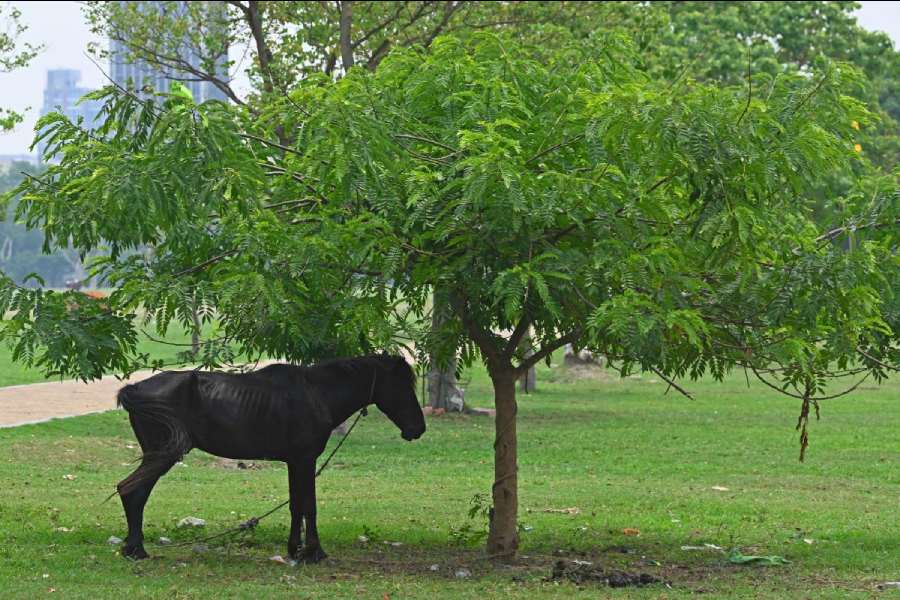A cyclonic circulation on the southeast Bay of Bengal, the precursor of Cyclone Mocha, took shape on Saturday.
The formation of the circulation kick-started the life cycle of the first tropical cyclone on the Bay this season. What now looks like a speck on the vast sea from satellite images is expected to intensify into a monstrous storm barrelling towards land.
But the path and possible landfall destination of the storm are still not clear, said officials of the India Meteorological Department. Multiple weather forecast models have differed on the possible landfall points.
“Once the low-pressure area takes shape, the likely future path and other details can be predicted,” said G.K. Das, director, IMD, Kolkata.
A Telegraph lowdown on the cyclone in the making.
First step
A Met bulletin on Saturday predicted that the low-pressure area, the second stage in the lifecycle of the storm, would take shape on Monday, a day later than the previous prediction.
“A cyclonic circulation has formed and lay over Southeast Bay of Bengal and neighbourhood... Under its influence, a low-pressure area is likely to form over the same region by 8th May, morning. It is likely to concentrate into a depression over Southeast Bay of Bengal around 9th May,” said the bulletin.
“It is likely to intensify into a cyclonic storm while moving nearly northwards towards central Bay of Bengal. The details of its path and intensification will be provided after the formation of the low-pressure area. The system is under constant watch and being monitored regularly,” the bulletin said.
Multiple models
While multiple forecast models have predicted further intensification of the storm even after it turns into a cyclone, the models differ on the timing of the formation of the depression and the possible landfall destination of the storm.
The India Meteorological IMD-GFS (Global Forecast System) model indicates depression around May 8, NCEP (National Centers for Environmental Prediction)-GFS model around May 9 and the ECMWF (European Centre for Medium-Range Weather Forecasts) around May 10.
While these models have predicted that the storm is likely to intensify even after turning into a cyclone, the suggested landfall zone is varying from south to northeast Myanmar.
The IMD Tropical Weather Outlook has acknowledged the variations.
“There is large variation among various models with reference to time of genesis... These models are indicating intensification of this system into a severe cyclonic storm. With reference to track, there is large variation among these models with landfall points varying from south to northeast Myanmar between May 13 and 14,” said the report.
An IMD official said considering the difference in the predicted outcomes, it was judicious to wait for the low-pressure area to take shape before coming out with a prediction about the path and landfall.
Distance
Das, of the Met office in Kolkata, said precedents have shown that tropical cyclones in May tend to move towards the east coast of India.
“As of now, the target is still a vast area of land between Odisha and Myanmar, with Bengal and Bangladesh in between,” he said, following the IMD line that more specific predictions will emerge only after the low-pressure area takes shape.
“The cyclonic circulation is at least 1,500km from Kolkata at the moment. If the system moves towards south Myanmar, the distance will be much less than that it has to cover to reach Bengal or Odisha,” said Das.
The journey on sea can be a two-edged sword, said a weather scientist.
“It can give enough time to help a storm gain monstrous power. A lengthy journey can also deplete its power if the sea surface temperature is not up to the mark or there is strong wind shear. A storm will lose steam if it peaks much before nearing land, “ he said.
The sea surface temperature on the Bay, now between 30 and 32 degrees Celsius, is ideal for powering cyclones.
Kolkata weather
The mercury is on the rise in Kolkata and Das predicted hotter days ahead.
The maximum temperature on Saturday was 36 degrees Celsius.
“The mercury is likely to go up by around three more notches in Kolkata. Rain is not likely in the coming days. The hot spell is likely to last till the middle of next week, at least,” said Das.
